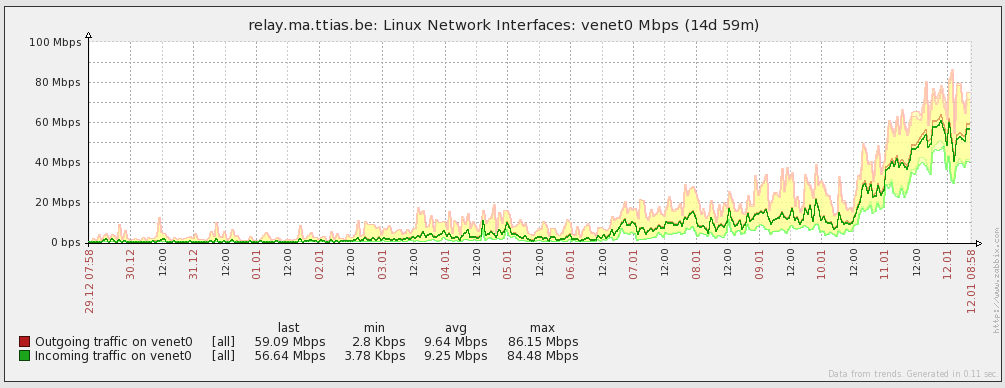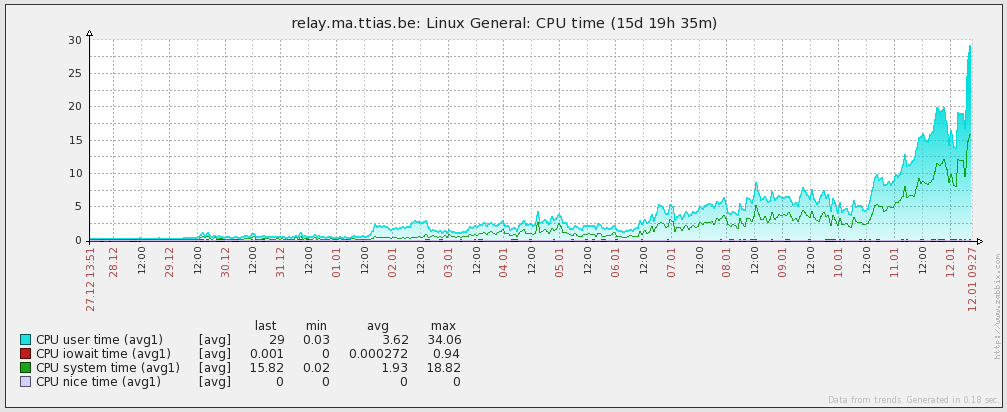Mozilla recently announced they’ll be running their own Tor relays to support the Tor project.
As an experiment, I added a Tor relay (not an exit node, I had no interest in dealing with complaints/abuse reports) to my own server a few weeks earlier, to see what kind of traffic it would/could do.
After the initial setup, your relay goes through a “learning period” of a few days, where your relay is evaluated. If it’s stable, it’ll receive more data along the way. After a few days, it was already peaking to > 80Mbps (around 8MB/s). This was faster than I had anticipated, so I killed the relay shortly after and it’s no longer running at this point.

In terms of CPU, this was a very low-end server and it peaked to around 30% when it was pushing around 80Mbps.

The top 10 relay list in the Tor Globe shows the most active relay is pushing more than 130MB/s in traffic, so a 1Gbps connection being completely saturated.
I considered this an experiment, to see what technical hurdles are involved in setting up a tor relay, how it works from a technical point of view, what happen to your server, … Technically, it’s super easy to set up. Pre-made packages are available, configs are explained and up-to-date setup guides are present.
But as a sysadmin for a hosting provider, I must admit I have mixed feelings about the Tor project. On the one hand, I love the ideal of Tor, of allowing users anonymous access to the public internet. Especially if your government is limiting freedom of speech by filtering the internet. But as a sysadmin, I more often see the negative aspects of traffic relayed through Tor: low-bandwidth denial of service attacks, SQL injection attacks, online abuse, harassment, …
It’s so easy to run everything through Tor as a client that it’s being abused more and more by “attackers”. Site reconnaissance, executing attacks on vulnerable content management systems, … a lot of scriptkiddie tools have Tor support built-in, to make it even easier.
So while I appreciate Tor from a distance, I won’t be running a Tor relay again any time soon.